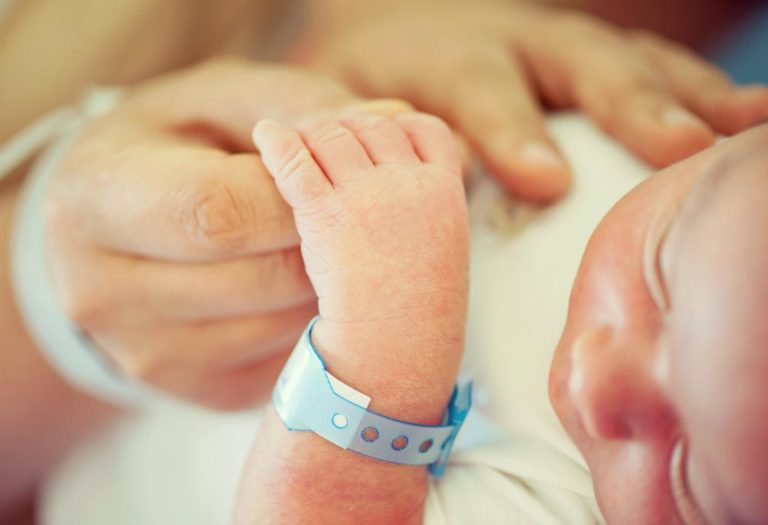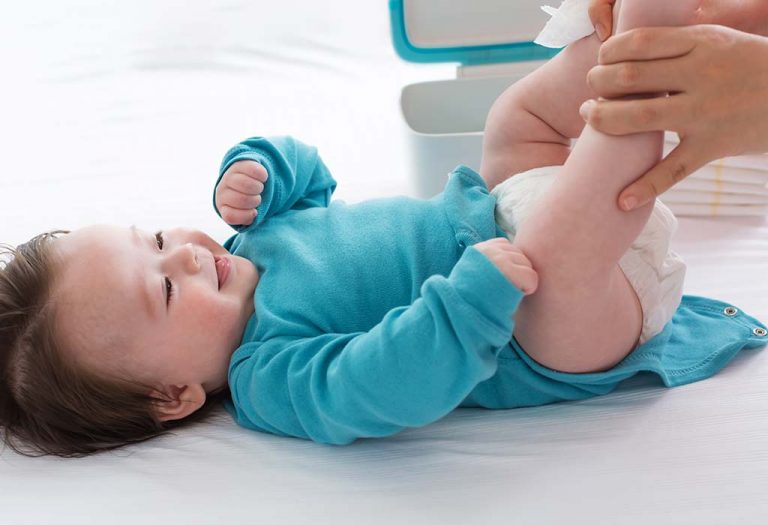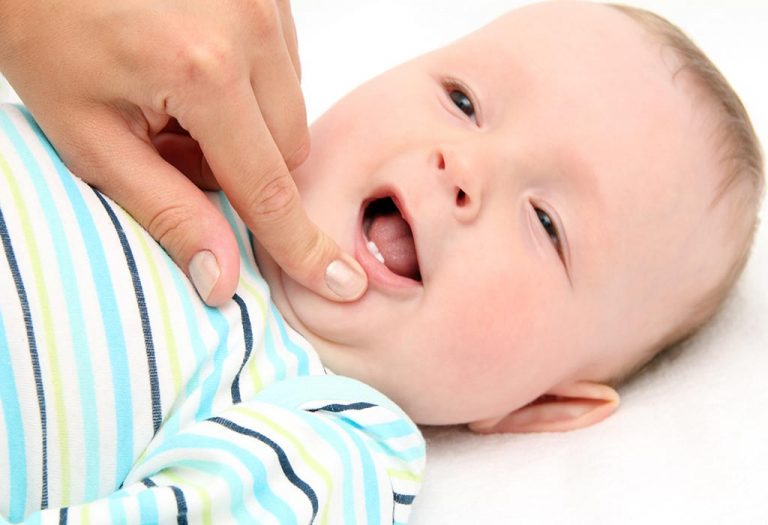Caput Succedaneum – Causes, Symptoms, and Treatment
Infants with a caput succedaneum have a “cone-head” appearance. That is what happens after a difficult birth. Although it stays for a while and may alarm new parents, it usually clears up in a few days. However, if treatment is delayed, caput in infants may lead to more severe problems. They may also develop alopecia (baldness) or infections from a “halo scalp ring.” Caput succedaneum in newborn babies may seem serious, but it is temporary and harmless. Learning about why it happens and the risk factors can help parents distinguish between what needs urgent medical attention and what does not.
What Is Caput Succedaneum?
By the Caput Succedaneum definition, it refers to the swelling on the head in babies. One of the most common causes of head-first (vertex) birth is tension from the uterine or cervical wall, which causes the condition. Basically, it happens due to the pressure on the baby’s head when it passes through the birth canal during a difficult or prolonged vaginal delivery. Due to the pressure, the fluid builds underneath the scalp, which leads to swelling. The swelling causes the baby’s head to have a cone-shaped appearance (1).
How Common Is Caput Succedaneum?
About two to 33 per cent of babies have a chance of developing this type of oedema or swelling.
What Causes Caput Succedaneum?
A caput succedaneum is much more likely to develop in births with the following complications:
- Membrane rupture occurs prematurely (PROM)
- Oligohydramnios is a type of oligohydramnios (insufficient amniotic fluid)
- Surgical instruments or suction lifters
- BH (Braxton Hicks) contractions
- A primiparous mother (first-time giving birth)
Increasing pressure on the newborn’s head may result in edema and bruises. Some other causes include:
- Bodily fluid – The newborn’s Caput Succedaneum is caused by a buildup of bodily fluid within their skull and the protective membranes that protect their skull bones. Specifically, the periosteum seems to be the term used to describe this layer of membranes.
- Labour during childbirth – This is a delicate situation for your child. When they are hurt, it doesn’t take much for them to swell up. A case of caput succedaneum happens with swelling of the scalp during labor once your baby’s head has just been compressed or pushed abnormally. It’s most prevalent throughout the workday.
- Excessive pressure during birth – When you go into labour, the newborn is placed under a great deal of stress. The cervical and uterine canal continues to press your baby even after having your cervical and uterine canal enlarged. Once they are born, this may result in swelling. Having labour and deliveries that take a long time or involve clamps or vacuum suction equipment may increase the probability of developing oedema (2).
- Insufficient amniotic fluid – Depending on how quickly the amniotic sac ruptures after birth, the newborn’s scalp may expand more than usual. Furthermore, if the kid is in an amniotic sac with insufficient fluid, they may be damaged by the pelvic bones of their mother while still in the mother’s body. This has the potential to induce caput succedaneum ever since your kid is even conceived.
Symptoms of Caput Succedaneum in Babies
A baby head caput succedaneum usually appears shortly after birth. It is a mushy protrusion of the skull, mainly on the side that first entered the baby’s head, but it can affect both sides. It is usually 1-2 cm deep. Contusions or epidermis colour swatches are possible. In most instances, a swollen scalp is not a life-threatening situation. A newborn may show the following signs of caput succedaneum:
- Puffiness – A puffed area appears beneath your newborn’s skull, with the majority of the same concentrating on the portion of their skull. It happens when it comes out of the vaginal canal first or when it is restricted to one side of the head.
- Delicate skin – When you stroke their head, it is so soft that you could accidentally make a tiny dent in it. The skin is generally normal except for some minor bruises all around the swollen region.
- Pointed skull – The child’s head will have a somewhat sharp form.
Complications of Caput Succedaneum
Caput on newborn helps alleviate itself without difficulty, but a question keeps hovering in many parents’ minds – is caput succedaneum serious? Yes, for sporadic cases, problems may arise from time to time, like:
- Alopecia: Due to compression applied to the head, a few surrounding tissues might disintegrate, resulting in baldness. In just about all instances, hair grows back correctly, but in rare circumstances, baldness is irreversible.
- Hepatitis: Due to increased red blood cells, bilirubin may accumulate in the blood. This causes babies’ complexion and the whites of their eyes to appear yellow. Hepatitis, if severe or ignored, may lead to a slew of other problems.
- Jaundice: Babies may develop jaundice due to an increase in bilirubin levels in the blood, resulting in a yellowish discolouration of the eyes. This condition usually resolves on its own (3).
Other complications are:
- Harm to the central nervous system
- Deafness
- A mobility condition called athetoid or severe autism
- Death
- Life-long upwards eye-gazing
Caput Succedaneum Diagnosis
It is common for caput succedaneum to be diagnosed on physical assessment alone, but without further tests. There’s a more problematic issue. Physicians may recommend additional testing to determine if a more severe condition is present. In certain instances of cephalohematoma, a fracture of the head may also be present. Consequently, an X-ray of the skull might help to assess the head structure.
What Is the Treatment for Caput Succedaneum?
A caput succedaneum is rarely treated; it usually resolves on its own over the first few postnatal days (4).
Nonetheless, the associated bruises may result in increased bilirubin and hepatitis. Hepatitis is also not a significant threat and usually resolves on its own. Hepatitis treatments may include phototherapy, blood transfusions, or addressing underlying causes. Untreated or mismanaged hepatitis can result in keratoconus or severe and irreversible brain damage. Keratoconus can cause Down syndrome, deafness, and other long-term problems. Caput succedaneum helps alleviate on its own within a few days to weeks after birth, without any need for invasive procedures (5).
Since there are no other traumas or comorbidities, a diagnosis usually heals without any need for medical intervention between two and five weeks after giving birth, depending on the circumstances. In certain instances, a cephalohematoma may lead to additional, more severe complications, such as infections, which may necessitate the use of medicines and surgical treatments to resolve. Sometimes even a cephalohematoma might continue and solidify, resulting in a substantial hump that will eventually disappear. This is most commonly the case over time.
Headgear therapy, which uses cranium moulding, is yet another therapeutic option. Infants wear uniquely engineered headgear for 18 to 20 hours each day until their heads are sculpted to the appropriate form. Though uncommon, one would require this treatment for a chronic cephalohematoma in the brain.
Caput Succedaneum vs Cephalohematoma
Caput succedaneum and cephalohematoma are two birth injuries that are similar, if not identical. The same causes the newborn child’s head to swell.
Caput succedaneum is a medical issue similar to cephalohematoma, causing internal bleeding during pregnancy. Caput succedaneum is described as subcutaneous edema across the affected area of the head. A cephalohematoma is a blood clot under the skin’s surface, which causes bruising of the head (6).
While caput succedaneum resolves within a few days or weeks after birth, cephalohematoma may take a few months to resolve completely to resolve well on its own (7).
When to Consult a Doctor?
Caput succedaneum usually resolves on its own. However, complications can occur anytime. Although rare, both cephalohematoma and caput succedaneum can get infected. Cephalohematoma is calcified and turns into bone, and a surgery might be required to remove the ossified cephalohematoma.
If the swelling on your little one’s head does not seem to reduce or any new symptoms appear, like jaundice, call your doctor immediately without any delay. In some cases, newborn babies may experience hair loss at the site of swelling, but it is harmless and the hair will eventually regrow.
If you notice your little one being lethargic or notice lesions growing in size on your baby’s scalp, increasing redness, irritability, or running a fever, contact your doctor without a delay, as these are not normal signs.
FAQs
1. What are the long-term possibilities of a caput succedaneum?
Caput succedaneum usually resolves on its own in some time. But if it doesn’t, you should consult your doctor. The long-term possibilities of this condition include jaundice, baldness, infection, and scarring.
2. What if caput succedaneum does not resolve on its own?
If caput succedaneum continues in the baby and the blood has pooled over the skull, the likelihood of jaundice and other infections increases.
3. Does a cesarean delivery cause caput succedaneum in babies?
Caput succedaneum is typically seen in babies born through vaginal delivery and not in a C-section, as there is no pressure on the infant’s head due to forceps or pelvic bones.
4. Is a baby’s weight a risk for caput succedaneum?
Yes, the more the baby’s weight, the more the risk of caput succedaneum, as when the baby comes down the birth canal, it puts pressure on the baby’s head.
Having your child suffer as a consequence of a potential birth injury may be devastating. It is possible that, as a concerned parent, you may need to take all the necessary steps to obtain the correct therapy at the right time.
References/Resources:
1. Cleveland Clinic – Caput Succedaneum
3. PubMed Central – Traumatic Birth Injury in a Term Neonate
5. PubMed Central – Neurological Neonatal Birth Injuries: A Literature Review
6. American Academy of Pediatrics – Your Baby’s Head
7. PubMed Central – Observational Case Analysis of Neonates With Large Cephalohematoma
Also Read:
Head Shape of Infant
Soft Spot on Infant’s Head
Infant Sunken Fontanelles
When Can Babies Hold Their Heads Up?
Was This Article Helpful?
Parenting is a huge responsibility, for you as a caregiver, but also for us as a parenting content platform. We understand that and take our responsibility of creating credible content seriously. FirstCry Parenting articles are written and published only after extensive research using factually sound references to deliver quality content that is accurate, validated by experts, and completely reliable. To understand how we go about creating content that is credible, read our editorial policy here.






















